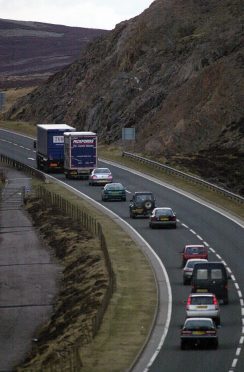It’s the road where car radios fail to work for long sections of any motorist’s journey.
But the A9 could soon become an information superhighway under ambitious new plans.
The Scottish Government has pledged to deliver 3G phone signals between Inverness and Perth – while even faster connections should be available by the time the road has been dualled.
The high-speed proposals are aimed at promoting tourism on the route, while also assisting motorists, affected by accidents and bad weather, to receive the latest information.
The improved connectivity is also being introduced to help with the major construction works ongoing along the A9 for the next few years as part of the £3billion dualling works.
The government has awarded a £100,000 contract to Edinburgh-based development agency, Xdesign, to deliver the phone signal project.
Full details of how the new technology will work is due to be revealed early next year.
At the moment, the government describes 3G and 4G signals along the A9 corridor as “patchy with some areas having no coverage”.
The work is part of a wider initiative backed by the government, known as the CivTech challenge, which involves six projects across Scotland, two of which are based around the A9 dualling works.
The second involves making use of technology for marketing and interpretation of services and the landscape along the route of the A9.
A Scottish Government spokeswoman said: “The dualling of the A9 provides many opportunities for communities along the route and further afield, including for the tourist sector.
“As part of this, we are looking for ideas of how new technology can be used to promote these destinations to drivers and their passengers, and we expect to unveil some of these ideas from successful applicants early in 2017.
“This initiative is about helping to build growth in the local rural economy, while making sure there is sufficient mobile coverage along the route, so motorists can stop to safely access traffic information and make phone calls if necessary.”
Transport Scotland is also understood to be interested in the greater connectivity as a means of gathering data from cameras and monitoring road conditions.
